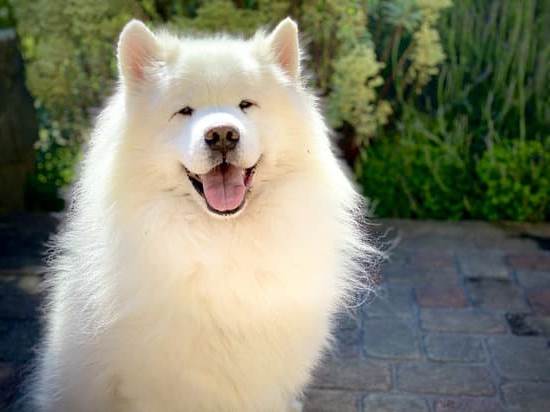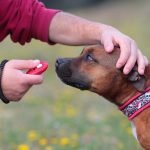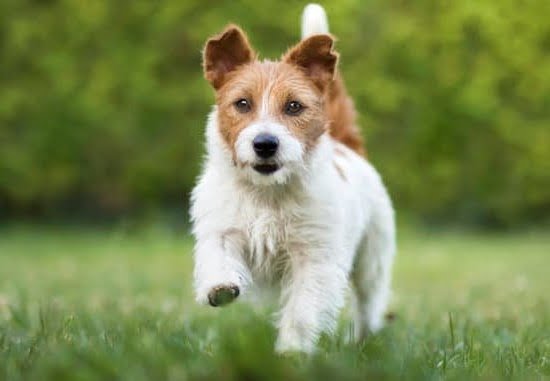Gun dogs are highly skilled hunting companions, known for their ability to track, retrieve, and flush game. However, these talents do not come naturally to them. Training is crucial for gun dogs to hone their instincts and develop the necessary skills to excel in the field. In this article, we will explore how you can help your gun dog train themselves, empowering them to become exceptional hunting partners.
Training is essential for gun dogs as it ensures their safety, improves their reliability in the field, and strengthens the bond between owner and dog. A well-trained gun dog displays obedience, attentiveness, and discipline – qualities that are paramount when working with firearms during hunts. Additionally, training allows gun dogs to reach their full potential by sharpening their natural instincts and honing their abilities.
The benefits of having a well-trained gun dog extend beyond the hunting season. A trained gun dog becomes a well-behaved companion and a valuable member of the family. With proper training, they can be reliable around children and other pets while remaining obedient even in challenging situations. Furthermore, training provides mental stimulation for these intelligent Breeds substantially benefitting their overall well-being.
Now that we understand why training is important for gun dogs let’s delve into how their natural instincts can be utilized during training sessions to maximize learning potential.
Understanding Gun Dogs and Their Natural Instincts
Gun dogs are a unique group of hunting dogs that possess specific instincts and traits that make them highly efficient in the field. Understanding these natural instincts is crucial for successful training.
Firstly, it is important to recognize that gun dogs have been bred over generations for certain tasks such as retrieving game or pointing out prey. Retrievers, like Labradors and Golden Retrievers, are known for their strong retrieving instinct and love for water. Pointers, such as German Shorthaired Pointers and English Setters, have a natural instinct to freeze and point towards birds or other game.
Spaniels, on the other hand, excel at flushing out prey from hiding spots. By understanding these innate behaviors, gun dog owners can focus on harnessing and refining these instincts during training.
Gun dog training should ideally channel these natural instincts into desirable behaviors that align with the goals of hunting or other activities. For example, a pointer’s freezing behavior can be shaped into steady pointing on command. A retriever’s love for fetching can be directed towards retrieving specific items accurately. Understanding how each breed works helps trainers tailor their methods specifically to their gun dog’s needs.
In addition to their innate instincts, gun dogs also have remarkable intelligence and problem-solving abilities. This intelligence allows them to learn complex tasks quickly when given the right guidance and incentives. By utilizing positive reinforcement techniques such as treats and rewards, trainers can tap into their gun dog’s natural desire to please their owners while simultaneously fostering independence.
By acknowledging and working with the natural instincts of gun dogs, owners can create a rewarding training experience that taps into their dog’s strengths while also challenging them mentally and physically. When done correctly, this approach empowers gun dogs to train themselves through guided learning experiences that build upon their innate abilities.
Choosing the Right Gun Dog Breed
Gun dogs are an incredibly diverse group of breeds, each with their own unique characteristics and strengths. When it comes to choosing the right gun dog breed, it is important to consider factors such as your specific needs and lifestyle. Understanding the different gun dog breeds and their qualities can help you make an informed decision.
One common gun dog breed is the Labrador Retriever. Known for their excellent retrieving abilities and friendly temperament, Labradors are a popular choice for many gun dog enthusiasts. They are versatile in various hunting scenarios, from retrieving game in water to tracking down upland birds on land. Labradors are known for their intelligence, trainability, and willingness to please, making them an excellent choice for both novice and experienced trainers.
On the other hand, if you prefer a smaller-sized gun dog with a strong sense of smell and natural hunting abilities, consider looking into the English Springer Spaniel. These dogs excel at flushing game birds out of thick cover and have a keen nose for scent detection. Springer Spaniels are highly energetic and require regular mental and physical exercise to thrive. They are also known for their affectionate nature and make great family companions.
In addition to these breeds, there are numerous other gun dog breeds that may suit your specific needs and preferences. It is important to research each breed thoroughly to understand their energy levels, size, temperament, grooming requirements, as well as any potential health issues that may be associated with the breed.
Ultimately, choosing the right gun dog breed is about finding a match that complements your lifestyle and aligns with your hunting goals. By taking the time to evaluate different breeds based on their characteristics and suitability for your needs, you can ensure a rewarding partnership with your chosen gun dog companion.
| Gun Dog Breed | Main Qualities |
|---|---|
| Labrador Retriever | Excellent retrieving abilities, friendly temperament, versatility |
| English Springer Spaniel | Strong sense of smell, skilled at flushing game birds, energetic |
Creating a Suitable Training Environment
When it comes to training gun dogs, creating a suitable environment is essential for their success and progress. A conducive training space allows gun dogs to focus and learn effectively. Here are some key considerations for setting up the ideal training environment for your gun dog.
Setting Up a Conducive Training Space
To create a suitable training environment for your gun dog, designate a specific area where you can conduct training sessions consistently. This could be your backyard, a nearby park, or even an indoor space during inclement weather. It’s important to choose an area that is spacious enough for your dog to move around comfortably.
Ensure that the training space provides ample room for both on-leash and off-leash exercises. If possible, have access to open fields or areas where you can simulate hunting scenarios. This will allow your gun dog to practice and hone their skills in various environments.
The Importance of a Safe and Distraction-Free Environment
A safe environment is crucial when training gun dogs. Remove any potential hazards or distractions that may divert your dog’s attention from the training session. This includes securing any toxic plants, cleaning up debris or clutter, and ensuring there are no escape routes.
Additionally, minimize external disturbances such as loud noises or other animals that may interfere with the training process. By eliminating distractions, you can help your gun dog stay focused on learning and reinforce their commands effectively.
Remember that consistency is key in maintaining the suitability of the training environment. Keep it consistent throughout all training sessions so that your gun dog becomes familiar with the space and understands its purpose.
By creating a suitable training environment for your gun dog, you are setting them up for success in their self-training journey. The right space contributes to their ability to concentrate, learn new skills, and build confidence as they progress in their training program.
Utilizing Positive Reinforcement Techniques
Positive reinforcement is a highly effective training method that can be particularly beneficial for gun dogs. By utilizing positive reinforcement techniques, such as treats, praise, and rewards, you can enhance the learning process for your gun dog while building a strong bond of trust and cooperation.
The concept of positive reinforcement involves rewarding desired behavior in order to encourage its repetition. When it comes to training gun dogs, this approach focuses on rewarding them for displaying the behaviors and commands you want them to learn and perform. This could include basic obedience commands like sit, stay, and heel, as well as more advanced skills specific to gun dog training.
One of the key advantages of positive reinforcement is that it helps create a positive association between the desired behavior and the reward. By consistently pairing rewards with specific actions or commands, your gun dog will begin to understand that performing those actions leads to pleasant outcomes. This not only motivates them to engage in the desired behavior but also helps them better retain what they have learned.
To effectively utilize positive reinforcement techniques in your gun dog’s training, it’s important to select appropriate rewards that are highly motivating for them. This could include small food treats that they find irresistible or verbal praise accompanied by physical affection like petting or gentle scratching.
The timing of the reward delivery is also crucial – it should be given immediately after your gun dog successfully performs the desired behavior to ensure they make a clear connection between their action and the reward.
By utilizing positive reinforcement techniques during your gun dog’s training sessions, you can create an enjoyable learning experience that strengthens their willingness and enthusiasm to learn. Consistency is key in this approach, so make sure to maintain a predictable schedule for training sessions and consistently use rewards to reinforce desired behaviors. With patience, persistence, and the right incentives, your gun dog will soon become a skilled companion ready for any hunting adventure.
| Benefits of Positive Reinforcement Training | Example |
|---|---|
| Enhances learning process | A gun dog is rewarded with a treat and praise every time they successfully retrieve a dummy during training sessions. |
| Strengthens bond and trust between handler and gun dog | The gun dog receives verbal praise and a belly rub after each successful recall, reinforcing their trust in the handler’s commands. |
| Motivates desired behavior | The gun dog is given their favorite toy as a reward for staying steady during a simulated hunting scenario, motivating them to maintain focus and steadiness in future instances. |
Encouraging Self-Training in Gun Dogs
Gun dogs have a natural instinct and drive to work independently, making them highly trainable. By fostering their independence and problem-solving skills, gun owners can encourage self-training in these remarkable animals. This section will explore the methods and benefits of promoting self-training in gun dogs.
To encourage self-training in gun dogs, it is important to let them learn at their own pace. Each dog is unique and may require different amounts of time to grasp certain commands or skills. By allowing them the freedom to explore and experiment during training sessions, gun owners can empower their dogs to develop problem-solving abilities while building a stronger bond with their pets.
One effective method for encouraging self-training in gun dogs is through the use of targeting exercises. These exercises involve luring the dog to a specific target, such as your hand or an object, using treats or toys. As the dog becomes more proficient at following the target, you can gradually introduce verbal commands associated with the desired behavior. This approach not only encourages independent thinking but also helps dogs associate the command with a specific action.
In addition to targeting exercises, scent work is another valuable tool for promoting self-training in gun dogs. These breeds have an innate ability to track scents, making scent work an engaging activity that taps into their natural instincts. By incorporating scent-based games and puzzles into training sessions, gun owners can provide mental stimulation while encouraging problem-solving skills and independent learning.
| Method | Description |
|---|---|
| Targeting exercises | Luring the dog with treats or toys to a specific target and introducing verbal commands |
| Scent work | Engaging activities that tap into the dog’s natural instinct for tracking scents |
Incorporating Fun and Interactive Training Games
Training sessions for gun dogs can sometimes feel repetitive and mundane, especially if you rely solely on traditional methods. To keep your dog engaged and motivated during training, it’s important to incorporate fun and interactive games into their routine. These games not only make training sessions enjoyable for both you and your gun dog but also help reinforce the commands and skills they are learning.
One popular game that can be beneficial in gun dog training is hide-and-seek. This game taps into your dog’s natural instincts to use their sense of smell and hunting abilities.
You can start by hiding a favorite toy or treat somewhere within an enclosed area and encouraging your dog to find it using their nose. As they become more skilled at locating hidden objects, you can gradually increase the difficulty level by hiding the item in more challenging spots or even outdoors.
Another game that can enhance your gun dog’s training is fetch with a twist. Instead of simply throwing a ball for them to retrieve, you can attach a small training scent strip to the ball before throwing it.
This introduces an additional scent element which adds complexity to the game and helps reinforce their tracking skills. You can gradually increase the distance at which you throw the scented ball, allowing your gun dog to practice their retrieval skills while honing their ability to track different scents.
Additionally, consider incorporating obedience-based games such as “Simon Says” or “Follow the Leader” into your training routine. These games allow you to practice important commands like sit, stay, heel, and recall in a playful manner. By turning these commands into a game, you make them more enjoyable for your gun dog while still reinforcing their training foundation.
Remember that these games should always be positive experiences for your gun dog, so be sure to reward them with treats or praise when they successfully complete a task or exhibit good behavior during the game. The goal is to make training sessions fun and engaging, building a strong bond between you and your gun dog while encouraging them to learn and improve their skills.
Consistency and Persistence in Training
Importance of Consistency and Persistence
Consistency and persistence are essential elements in any successful gun dog training program. These two factors play a crucial role in reinforcing desired behaviors, building a strong bond between the handler and the dog, and ensuring steady progress throughout the training process. Consistent training methods and routines provide clear expectations for your gun dog, while persistence helps to reinforce those expectations over time.
Maintaining a Regular Training Schedule
One of the key aspects of consistency in gun dog training is maintaining a regular training schedule. Dogs thrive on routine, and establishing a consistent training schedule will help your gun dog know what to expect and when to expect it. It is important to set aside dedicated time for training sessions every day or several times a week, depending on your availability.
During these training sessions, focus on specific commands or skills that you want your gun dog to learn or improve upon. Start with short, frequent sessions of about 10-15 minutes each, as dogs have shorter attention spans and can become easily fatigued with prolonged training.
Avoiding Setbacks
Persistence is another crucial aspect of successful gun dog training. While it can be tempting to give up or become frustrated when faced with challenges or setbacks, it is important to remain persistent in your efforts. Remember that learning takes time, especially for gun dogs who may have different learning styles or temperaments.
If you encounter difficulties during the training process, reflect on your approach and make adjustments accordingly. Seek professional guidance if needed, as experienced trainers can provide valuable insight into overcoming certain challenges.
By consistently implementing training exercises and persistently working through any obstacles that arise, you will gradually shape your gun dog’s behavior into desired patterns. The key is to stay patient, positive, and persistent throughout the entire journey of training your gun dog.
Incorporating consistency and persistence in your training routine will not only lead to a well-trained gun dog, but it will also strengthen the bond between you and your furry companion. Training is an ongoing process, and with dedication and perseverance, you can empower your gun dog to reach their full potential.
Troubleshooting Common Training Challenges
Gun dog training can come with its fair share of challenges, but with the right strategies and techniques, you can overcome these obstacles and continue making progress. In this section, we will explore some common training challenges that gun dog owners may encounter and provide effective strategies for addressing them.
Lack of Focus
One common challenge during gun dog training is a lack of focus from the dog. This can manifest as easily getting distracted by other animals or stimuli in the environment. To address this, it is important to start training in a low-distraction environment and gradually increase the level of distractions as your dog improves. Incorporating short training sessions throughout the day can also help improve focus and prevent boredom.
Another effective technique is leash training. By keeping your gun dog on a leash during training sessions, you have better control over their movements and can redirect their attention when they start to lose focus. Additionally, using high-value treats or toys that capture your dog’s interest can serve as a valuable tool to keep them engaged and focused during training.
Difficulty with Recall
Having a reliable recall command is essential for gun dogs, as it ensures their safety and ability to respond quickly when needed. However, many gun dogs may struggle with this command initially. To address this challenge, it is crucial to make recall training a positive experience for your dog.
Start by practicing recall commands in a controlled environment where there are minimal distractions. Use enthusiastic praise, treats, or toys to reward your gun dog when they successfully come to you upon hearing the recall command. Gradually increase the level of distractions as your dog becomes more proficient at recalling.
Consistency is key when working on recall with your gun dog. Practice this command regularly in various environments to ensure they understand it thoroughly and can respond reliably regardless of the circumstances.
Overcoming Gun Shyness
Gun shyness can be a significant roadblock in gun dog training. It is essential to introduce your gun dog to the sound of gunfire gradually and positively. Begin by playing recordings of gunshots at a low volume while engaging in enjoyable activities or providing treats. Slowly increase the volume over time, always ensuring that your dog remains calm and comfortable.
Pairing the sound of gunfire with positive experiences, such as playtime or receiving rewards, can help desensitize your dog to the loud noises associated with hunting. Patience is key when addressing gun shyness, as each dog will have different tolerance levels. It may take several sessions before your gun dog becomes comfortable with the sound of gunfire.
By implementing these strategies and keeping a patient and persistent mindset, you can overcome common training challenges and continue making progress in training your gun dog effectively. Remember that every dog is unique, so it may take some trial and error to find the strategies that work best for your specific dog breed and personality.
Celebrating Progress and Milestones
Achieving milestones and progress in gun dog training is a cause for celebration. Recognizing and acknowledging your gun dog’s achievements not only boosts their confidence but also strengthens the bond between you and your furry companion. In this section, we will explore the significance of celebrating progress and milestones in gun dog training and how it can contribute to continued success.
One way to celebrate progress is by using a training journal or diary. Keep track of your gun dog’s accomplishments, whether it’s mastering a new command, improving their retrieval skills, or showing progress in their hunting abilities. Recording these milestones allows you to reflect on how far your gun dog has come and provides motivation to continue training.
Another way to celebrate progress is through verbal praise and physical affection. Dogs thrive on positive reinforcement, so when they perform well during training sessions or demonstrate improvement in specific areas, lavish them with praise. Use enthusiastic words like “good job” or “well done” while simultaneously petting them or offering treats as a reward. This reinforces their behavior and makes them eager to continue learning.
In addition to verbal praise, incorporating small rewards can also be an effective way to celebrate milestones. Treats are traditional rewards for good behavior; however, make sure they are used sparingly and as a supplement rather than the sole motivator during training. Other options include interactive toys or games that your gun dog enjoys playing as a special treat after accomplishing something significant.
Overall, celebrating progress and milestones serves as positive reinforcement for your gun dog, reinforcing their good behavior, solidifying learned skills, and encouraging continued growth. By acknowledging their achievements during the training process, you create an environment of encouragement and motivation for both you and your gun dog. Remember that every small step forward is worth celebrating in order to keep progressing towards successful self-training for your gun dog.
Conclusion
In conclusion, training is of utmost importance for gun dogs to ensure they become well-behaved and efficient partners in hunting or other related activities. This article has highlighted the significance of understanding a gun dog’s natural instincts and choosing the right breed that aligns with your needs and lifestyle.
It has also provided valuable insights on creating a suitable training environment, utilizing positive reinforcement techniques, fostering self-training and problem-solving skills, incorporating fun and interactive training games, maintaining consistency and persistence, troubleshooting common challenges, and celebrating progress.
By implementing the strategies discussed in this article, you can empower your gun dog through self-training. Understanding their natural instincts and using them as a foundation for training allows these dogs to utilize their innate abilities effectively. Moreover, creating a safe and distraction-free environment enables them to focus on learning new tasks more efficiently. The use of positive reinforcement techniques like treats, praise, and rewards further enhances their learning process by instilling confidence and motivation.
Fostering independence and problem-solving skills in gun dogs allows them to learn at their own pace while still achieving the desired training goals. Incorporating fun and interactive training games not only makes the sessions enjoyable but also reinforces commands and skills necessary for their roles as dedicated working dogs. Consistency and persistence play pivotal roles in successful training as they promote habit formation and prevent setbacks.
Lastly, recognizing achievements through praise and reinforcement serves as an essential aspect of continued success in gun dog training. By celebrating progress milestones along the way, you encourage your gun dog’s confidence growth while reaffirming their correct behaviors. Remember to stay patient, flexible, adaptable when troubleshooting common challenges that may arise during training.

Welcome to the blog! I am a professional dog trainer and have been working with dogs for many years. In this blog, I will be discussing various topics related to dog training, including tips, tricks, and advice. I hope you find this information helpful and informative. Thanks for reading!





